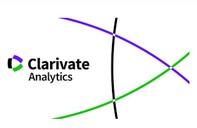Models for assessment of human error in system reliability studies.
Abstract
The probabilistic analysis of risks applied to complex industrial systems demonstrates that human error is a very important part of the total risk, although its exact quantification is doubtful. On the other hand, the current techniques for modeling and calculating human errors presuppose, in a way not always explicit, the election of a certain pattern of human behavior; in such a way that many limitations revealed by the scientific literature seems due to the use of so named ‘partial’ behavior models, while the ‘general’ models, that are more ambitious, still need better methodological development. The present work describes the methods applied currently to human reliability studies and it points out the relationship that underlies between these and the models for human behavior representation, showing the investigation lines ongoing for covering methodological lacks. We declare the protagonism of Psychology about defining the human behavior models that underlie the reliability analysis techniques, and also about criticizing these techniques, especially on the simplifications that, to make them more governable, they have the perverse effect of hiding psychological mechanisms of errors.Downloads
-
Abstract1168
-
PDF (Español (España))1723
The works published in this journal are subject to the following terms:
1. The Publications Service of the University of Murcia (the publisher) retains the property rights (copyright) of published works, and encourages and enables the reuse of the same under the license specified in paragraph 2.
© Servicio de Publicaciones, Universidad de Murcia, 2022
2. The works are published in the online edition of the journal under CC BY-SA 4.0 license, a Creative Commons Reconocimiento-CompartirIgual 4.0 (legal text). You are free to:
- Share: copy and redistribute the material in any medium or format for any purpose, even commercially.
- Adapt: remix, transform, and build upon the material for any purpose, even commercially.
The licensor cannot revoke these freedoms as long as you follow the license terms, under the following terms:
- Attribution: You must give appropriate credit , provide a link to the license, and indicate if changes were made . You may do so in any reasonable manner, but not in any way that suggests the licensor endorses you or your use.
- ShareAlike: If you remix, transform, or build upon the material, you must distribute your contributions under the same license as the original.
No additional restrictions: You may not apply legal terms or technological measures that legally restrict others from doing anything the license permits.
This work is licensed under a Creative Commons Attribution-ShareAlike 4.0 International License.
3. Conditions of self-archiving. Is allowed and encouraged the authors to disseminate electronically pre-print versions (version before being evaluated and sent to the journal) and / or post-print (version reviewed and accepted for publication) of their works before publication, as it encourages its earliest circulation and diffusion and thus a possible increase in its citation and scope between the academic community. RoMEO Color: Green.














